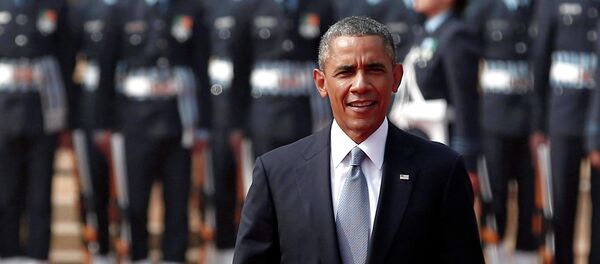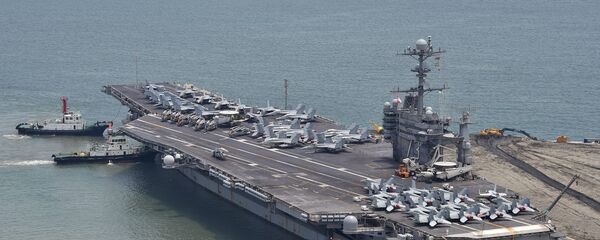MOSCOW, January 29 (Sputnik), Ekaterina Blinova — In December, 2000, the US National Intelligence Council released a report, foreseeing forthcoming changes the United States would see internationally over the next 15 years. The collapse of the Soviet Union in 1991 prompted tremendous geopolitical changes in the world. Ten years later, in 2000, the US National Intelligence Council (NIC) produced its Global Trends Report, compiling expert opinions on a wide range of issues such as globalization, demography and the environment, ultimately foreseeing major trends the US was most likely to face in 2015.
When the report was written the United States had reached unprecedented heights of "global hegemony." The document predicted that the leading role of the United States would expand rapidly over the next 15 years.
However, the report pointed out potential rivals that could pose a threat to the United States and its unmatched global leadership. Although "most adversaries will recognize the information advantage and military superiority of the United States in 2015," they will try "to circumvent or minimize US strengths and exploit perceived weaknesses." Remarkably, in 2000, the NIC viewed Russia, China, North Korea, Iran and Iraq as potential rivals capable of targeting the US using WMD (Weapons of Mass Destruction) or even nuclear missiles by 2015.
The NIC analysts accurately predicted the main global hotbeds of terrorist activity and social unrest, pointing, particularly, to the Middle East, Sub-Saharan Africa, Northern China, Central and Southern Asia. At the same time, "IT-driven globalization will significantly increase interaction among terrorists, drug traffickers, weapons proliferators, and organized criminals, who in a networked world will have greater access to information, to technology, to finance, to sophisticated deception-and-denial techniques and to each other."
Today we are fighting enemy exactly as described; a wide-spread terrorist organization in the Middle East bolstered by modern communication technologies. Islamic State, anyone?
However, the NIC analysts obviously failed to predict the success of the emerging powers, such as China and India. It seems that US experts could not – or did not wish to — foresee the economic and military growth of Russia and the increasing role of BRICS, steadily toppling the World Trade Organization from its leading position.
NIC's reported stated in 2000: "The most likely outcome is a Russia that remains internally weak and institutionally linked to the international system primarily through its permanent seat on the UN Security Council. In this view, whether Russia can adjust to this diminished status in a manner that preserves rather than upsets regional stability is also uncertain."
"The stakes for both Europe and the United States will be high, although neither will have the ability to determine the outcome for Russia in 2015. Russian governance will be the critical factor," the report added.
However, the so-called "dialog about the future" seems to be more than just a mere political "forecast." According to the NIC, its primary goal is to develop and implement strategies aimed at addressing the nation's "most pressing national security concerns."
Among the trends named as threatening the US governmental and corporate interests were: a growing anti-globalization movement; a geo-political alliance of China, India and Russia that could "counter-balance" US and Western influence; a collapse of the US-European Union alliance; and creation of some sort of "Asian Monetary Fund" or "Asian Trade Organization" targeting the IMF (International Monetary Fund) and WTO (World Trade Organization).
Analysts called upon the US government to avoid these "least possible" scenarios at all costs, while exercising its global leadership – and it would appear that Washington heeded this advice.
Over the years, the US has established close ties with the EU and maintained its political control over Brussels. In order to prevent the rise of the Middle Eastern powers of Iraq, Iran and Syria, the US had carried out several military campaigns against Iraq and backed so-called "moderate" rebels in Syria. Currently, Washington is expanding its military control over the region under the counter-terrorism pretext. At the same time, by launching sanctions against Russia, the US is apparently trying to undermine the growing influence of Moscow on the world arena. So, the question remains whether the document was a "forecast" or a plan to implement in order to preserve US global hegemony, gained after the collapse of the Soviet Union?
Luckily, the Global Trends report for 2030 has already been published, and we will be taking a closer look at it shortly. If you want to know what the global political arena will look like in 15 years’ time – stay tuned…





